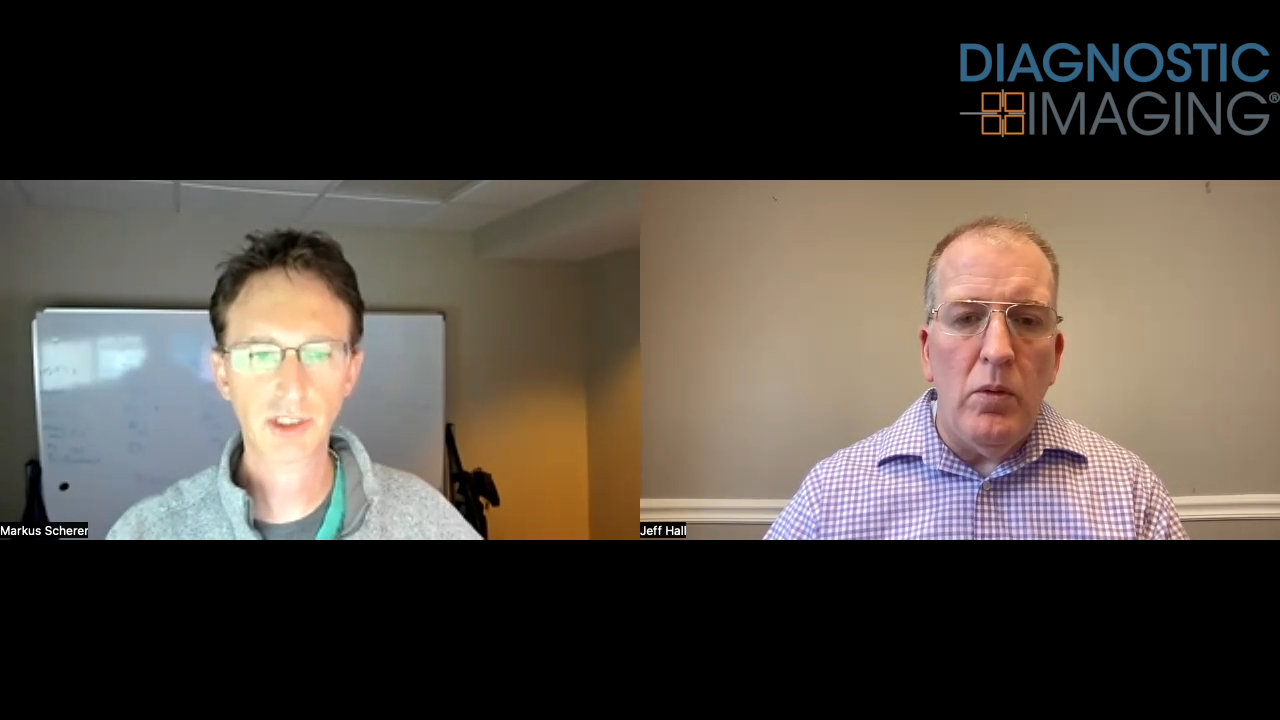Software transforms MSCT into coronary artery screening tool
Subtracted views of coronary vessels, reconstructed from CT data of the heart, may provide the means for screening patients with suspected coronary artery disease.
Subtracted views of coronary vessels, reconstructed from CT data of the heart, may provide the means for screening patients with suspected coronary artery disease.
The software for making these views, developed by Philips Medical Systems for use with its Brilliance CT line, reconstructs the coronary tree semiautomatically and produces images very similar to conventional coronary angiograms. Dr. Martin H.K. Hoffmann, a cardiac radiologist at University Hospital in Ulm, Germany, has used the software extensively, pulling images of coronary vessels from CT data sets obtained with a standard 16-slice Brilliance CT.
Hoffmann and colleagues showed a high correlation with coronary angiography results in studies of patients known or suspected to have CAD. They identified subjects who might be candidates for revascularization because of greater than 50% stenosis in one or more of the vessels. The research proved the viability of using multislice technology, even 16-slice scanners, to screen patients with intermediate or lower probability of CAD.
The use of CT for screening purposes has drawn criticism in the past, due to questionable benefits and radiation exposure. But Hoffmann argues that if the scanning is done with moderation, the benefits outweigh the risk in this case.
"I feel we would be on safe ground to do one of these coronary scans every one or two years on these patients," he said.
All the pieces will soon be in place for Philips to begin mass marketing such a test for physicians around the world. The company is now beta testing a "zero click" version of the software Hoffmann used in Ulm. This software, which is being groomed for commercial release in late summer, will automatically reconstruct the cardiac volume of interest, classifying the data according to tissue type.
"It allows us to turn on and off different tissue types at will, providing for a very good, very fast evaluation," said Phil Prather, Philips' director of cardiac CT.
Physician assessments will be possible within 10 or 15 minutes, a time frame Prather says is essential for widespread adoption of the technology.
The reconstructions include only cardiac-related data; all other data are eliminated. Tightening the field-of-view around the heart allows for maximum resolution, according to Hoffmann.
"When you're applying a matrix setting of 512 points on each side, the smaller the field-of-view, the higher the spatial resolution," he said.
New Philips customers will acquire their scans in much the same way as Hoffmann did in Ulm. The scanner will be set to cover just the heart. Minimizing extraneous tissue exposure to radiation can reduce dose by as much as 20%, Prather said. ECG gating, the use of beta blockers to reduce the heart rate, and a slow table feed will provide the data redundancy needed to capture relevant data points for specific phases of the heart and to eliminate artifacts from cardiac motion.
This acquisition technique and a semiautomatic version of the software proved the practicality of CT as a noninvasive alternative to coronary angiography. The results from 103 patients showed a sensitivity of 95%, specificity of 98%, positive predictive value of 87%, and negative predictive value of 99%, in a comparison of CT and coronary angiography to identify vasculature with greater than 50% narrowing. The study was published in the May 24 issue of the Journal of the American Medical Association.
Hoffmann and his colleagues found that 16-slice CT provided reasonably high accuracy for detecting significant obstructive CAD. Subjects with arrhythmia were excluded from the study groups, as ECG gating was needed to acquire a good-quality data set. And only subjects with intermediate or low probability of coronary heart disease were included, as they were less likely to have coronary calcifications that can lead to artifacts.
Such criteria might be eased in the future, however. The researchers concluded that with rapidly improving technology, MSCT may evolve from a useful complement to invasive angiography in these selected patients to a clinically viable alternative with a much wider application.
But reaching that stage may take more than just additional slices. The 64-slice scanners now entering the market might reduce but would not eliminate the artifacts caused by beam hardening and partial volume averaging. Dual-energy scanning, currently an experimental technology being examined for use in CT, may be needed to accurately quantify calcifications.
In the meantime, Philips plans to promote its 16-slice Brilliance CT Private Practice CV system for selected screening. The scanner, optimized for cardiac scanning, has attracted a lot of interest-and orders-since its unveiling last October, Prather said. Only a few have been installed, however, because private-practice cardiologists, who compose the target market for the scanner, have had to build onto existing facilities to house it.
Interest could increase with the introduction of Philips' zero click software, which will make a proven, JAMA-certified capability an automatic result. Interest could grow even more as results from additional clinical studies are published. A multinational study examining the use of multislice coronary CTA at 11 medical centers in the U.S., Europe, and Asia was completed earlier this year.
"We looked at whether we could reproduce results in highly specialized centers as well as ones not so highly specialized and without as much preselection of patients," Hoffmann said. "We've got a statistician working on the data right now."










